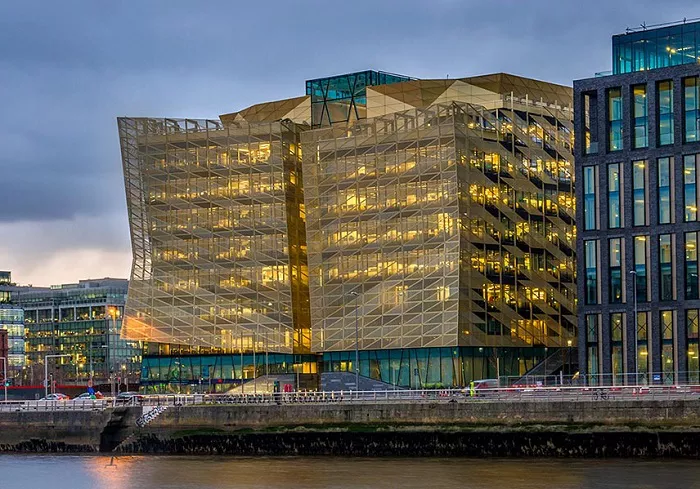Irish officials steer clear of using the term “soft landing.” This phrase was overused and often misapplied during the late 2000s, a period when the economy was heading for a severe crash. Now, the term is almost seen as meaning the opposite.
If the Central Bank said Ireland’s economy faced a “soft landing” amid current US tariff tensions, it might cause public alarm.
Perhaps due to the misplaced optimism of the Celtic Tiger years, there is now a tendency to focus more on negative outcomes.
In its latest quarterly bulletin, the Central Bank outlined three scenarios for how US tariffs and increased protectionism might affect Ireland’s economy.
In the baseline scenario, 20% tariffs would be applied to EU goods entering the US from the third quarter of this year, but pharmaceuticals and semiconductors would be exempt. Under this scenario, the economy would grow by 2% this year based on modified domestic demand and by an average of 2.1% in 2026 and 2027. The State would continue running a budget surplus through to 2030.
Though not labeled as such, this baseline can be seen as the Central Bank’s “soft landing” scenario.
A more negative scenario assumes 20% tariffs on pharmaceuticals and semiconductors as well, with the EU retaliating with similar tariffs on US goods. Here, economic growth slows, and the budget surplus shrinks to less than 1%.
However, the scenario that drew the most attention was the Central Bank’s “extreme scenario.” This predicts the State losing the entire windfall element of its corporate tax base, expected to peak at €17 billion in 2026. It also assumes a 20% drop in multinational investment and a loss of export market share.
In this case, the Government’s healthy budget surplus—€8.9 billion last year—would turn into a budget deficit of more than 4% of national income by 2030, equivalent to €17.7 billion.
There are many caveats: this scenario assumes the Government takes no corrective action and continues contributions to two long-term savings funds. Even so, such an outcome could push Ireland back into a period of austerity.
The scenario also highlights Ireland’s heavy reliance on a small number of US multinationals for tax revenue.
“This is a somewhat extreme scenario,” the Central Bank said. “It assumes a total loss of excess corporate tax by 2030 and weaker economic activity. But it illustrates a key vulnerability for Ireland tied to the future of foreign-owned capital.”
Robert Kelly, Central Bank director of economics and statistics, denied that the bank’s worst-case scenario was overly pessimistic. He noted it does not assume a major multinational would leave Ireland due to tariffs or US tax changes—the fear since the corporate tax boom began more than a decade ago.
The real nightmare would be if a giant like Apple or Intel decided to leave.
Despite these risks, there are reasons to believe corporate tax receipts—already a record €28 billion last year, excluding Apple’s tax payments—will continue to grow medium-term.
Firstly, the largest corporate taxpayers in Ireland operate in tech and pharmaceuticals, sectors currently exempt from US tariffs.
The Irish Fiscal Advisory Council (IFAC) expects business tax revenue to rise by about €5 billion from 2026 onward, due to additional revenue from a new 15% minimum global tax rate, higher than Ireland’s headline 12.5% rate.
Multinationals with turnover above €750 million have paid this higher rate since 2024 but will only start making payments next year. This is expected to add roughly €3 billion in tax revenue next year and €2 billion in 2027.
Even though the US has indicated it may withdraw from the OECD-brokered global minimum tax deal, tax authorities in Ireland and other countries continue to implement it.
Several large companies have been using generous capital allowances, which are ending soon. This will increase their tax liabilities and help push revenues higher.
Some optimistic forecasts suggest corporate tax receipts could rise to €40 billion. These forecasts argue Ireland should be saving more than current amounts directed to State savings funds.
However, the corporate tax windfall has coincided with rising government spending, which IFAC considers unsustainable.
It may be that Ireland’s bigger economic risks come from within—issues like housing, government spending, energy security, and the high cost of doing business—rather than from international trade disputes.


